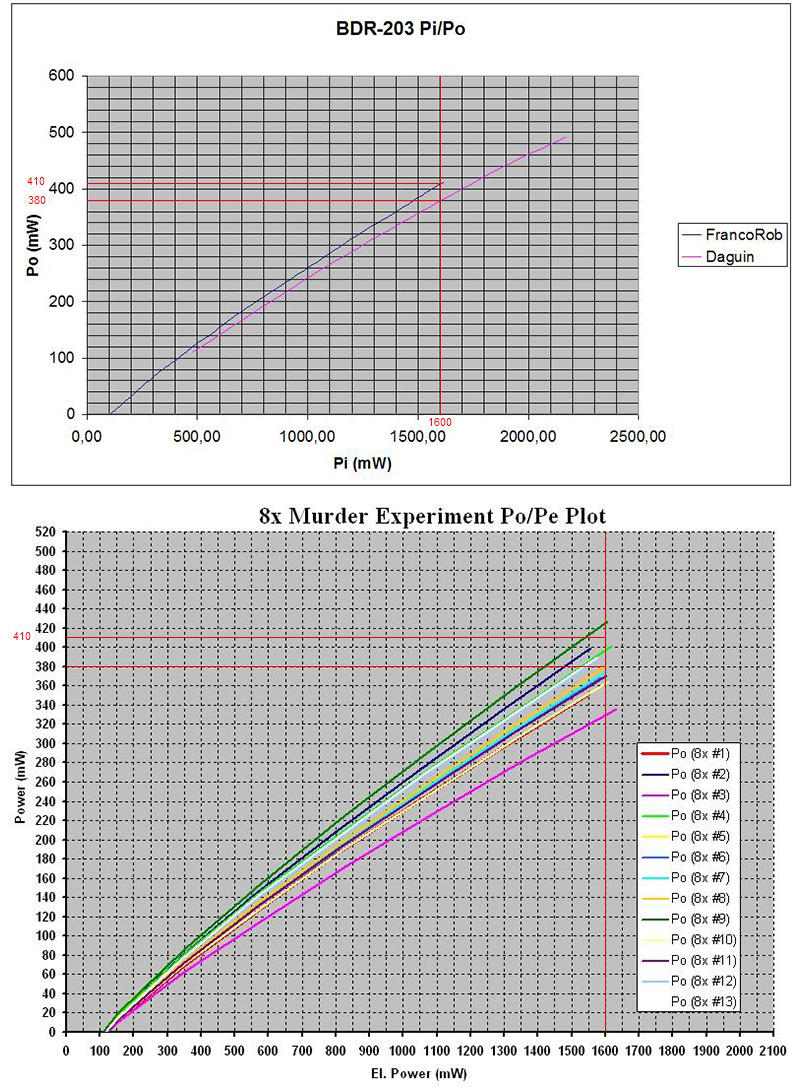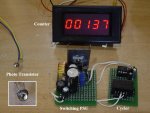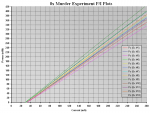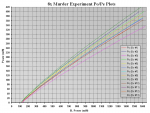IgorT
0
- Joined
- Oct 24, 2007
- Messages
- 4,177
- Points
- 0
I've been running my 8x on 300ma and it doesn't get hot at all. I'm buying another host... the 18650 one and I want to increase it to at least 390ma. The beam isn't really all that visible in its current state but it burns like hell and damnation itself. It even burns without being completely focused. The beam on my dilda is brighter than it is.
It doesn't even get warm for me. I have it in the side button host right now.
Again... no heat.
Heat? What does heat have to do with anything?
Heat is NOT what kills diodes, CJ! If you go by heat you'll kill your diode in no time (and you wouldn't be the first to do that - i've heard of people turning up the current while feeling for heat with their fingers)!
What kills diodes is their own optical output power - the light they produce, and it's effect on the end facets of the diode (optical flux at the die burns up the mirror, if it finds a weak spot - an imperfection, which then starts spreading and growing exponentially, eventually resulting in COMD, aka Catastrophic Optical Mirror Damage).
Heat only makes them age faster, but when i say heat, i'm talking about temperatures at which you couldn't even hold the laser in your hand!
Also, heat has the worst effects in constant power setups (like in drives, because the hotter the diode (= lower efficiency), the harder it has to be driven to maintain the required power level).
In lasers, where we use constant current, heat actually reduces the stresses on the diode (but only by a tiny bit), by reducing the optical flux at the die, since efficiency drops, while the current stays the same....
In fact, hot diodes can survive higher currents than cold ones, because cold they will produce more optical power at those currents.. Allmost every diode i killed died cold at a powerup, when their power is the highest and the powerup stresses push it over the edge...
From what you're saying, i am guessing you:
1. don't have a meter
2. stumbled upon a VERY SHORT wavelength 8x diode!
I found the 8x's to vary quite a bit in wavelength, and incidentally, one of the highest efficiency ones displayed the shortest wl. of the bunch (altho i only started doing relative wavelength measurements from 8x diode #5 - i'll do the first four later, i forgot at first)...
390mA is absurd! I'm sorry to have to say that, but they are dying at 360mA already, and not from heat. Besides, without a meter you don't even know it's efficiency, you might even have a freak on your hands... But whatever it's efficiency, i don't think 390mA is a good idea (If you really want to get rid of it that bad, send it to me instead... :angel
The reason i'm guessing it's a short wavelength, is because you said the beam of your dilda is brighter... BluRays usually have MUCH more visible beams outside at night, but a spot of a red does look brighter, and under some conditions (mist, fog) so can the beam of a red (- seem brighter, altho at the same time, the BluRays are still somehow more visible even tho the color itself is darker).
I think you should have someone meter your laser first, and if you REALLY HAVE to push it, consider a power at which at least some are surviving, like 360mA for example (even tho i'm not setting mine that high unless a miracle happens during testing - and it would have to be a VERY impressive miracle!)...
Last edited:









